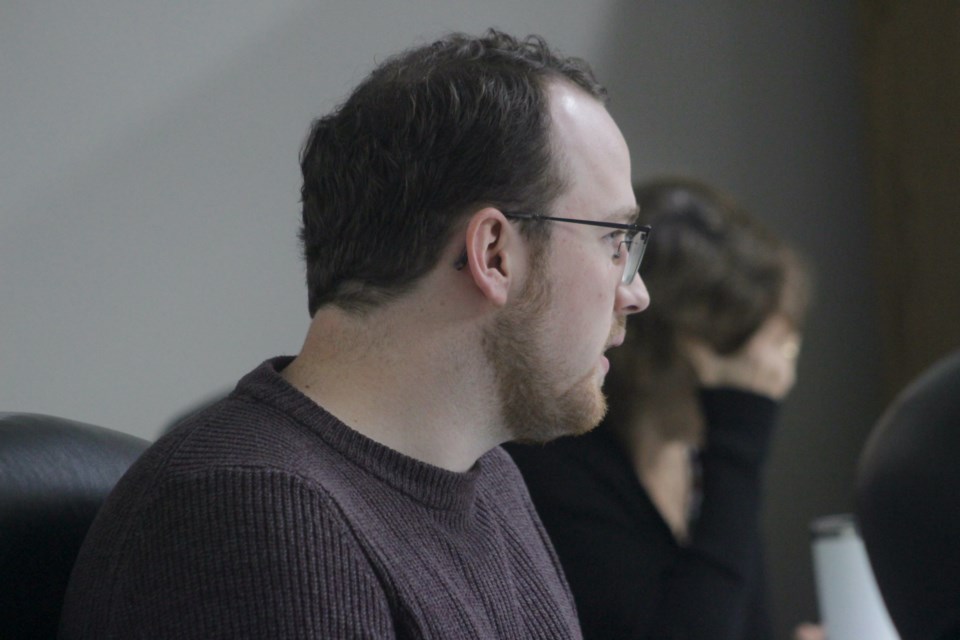BARRHEAD - Roads were at the top of County of Barrhead residents' minds when they filled out the 2024 Budget Priorities survey.
But how much weight councillors should give the survey is debatable as less than three per cent of residents took the time to fill out the annual survey.
County of Barrhead manager Debbie Oyarzun and development and communications coordinator Adam Vanderwekken presented the results to councillors at the Oct. 3 council meeting.
The county received 142 responses from the 32-question anonymous survey available online and in hardcopy, not all of which were from county residents or those who work inside the municipality's borders. About six respondents identified as being outside the county.
The municipality supplemented the survey, which is part of council's ongoing effort to encourage public engagement, with a two-day open house in late August with about 40 residents attending.
Vanderwekken stated that most respondents were over 65, and the vast majority were over 35.
Most, 91 per cent, identified themselves as owning property in the county, the majority being their primary residences. In comparison, nine per cent said they owned a county business, seven per cent said they owned a recreational property, while three per cent indicated that they accessed county services because they rented or worked in the county.
Of the property owners, most (54 per cent) stated that they had owned their property for over 20 years.
As for the service (excluding roads) that respondents accessed the most, 72 per cent stated the Barrhead Regional Landfill, followed by the Barrhead and Area Regional Crime Coalition (BARCC) messaging alert service at 69 per cent, library services at 55 per cent, transfer stations at 49 per cent, campgrounds and other day-use areas 45 per cent and Agricultural Services and development and planning at 40 per cent.
Rounding out the bottom of least used services were the truck water fill and fire services at 23 per cent, bylaw enforcement at 22 per cent, Barrhead and District Family Support Services (FCSS) at 15 per cent, along with sewer, airport and social housing at all under 10 per cent.
Vanderwekken noted that agricultural services and planning and development saw a huge spike, with 42 per cent more respondents saying they took advantage of those services. He added the number of respondents stating they used community services, the library and FCSS also increased 25 per cent over the 2023 survey.
Vanderwekken said the county asked what residents felt were the most important issues facing the county, which they asked again at the open house sessions.
Survey respondents put road and road maintenance at the top of their list, followed by economic development, rural crime (including safety, rural crime and bylaw enforcement), and fiscal responsibility and municipal efficiencies.
Vanderwekken said open house attendees differed slightly, agreeing that roads were the county's most pressing issue, followed by weed control and brushing, safety and signage.
As for what county residents felt the most important 2024 capital or operational projects were, Vanderwekken said the replies differed depending on the medium.
"The highest priority project at the open house was oiled road rehabilitation while it was in the middle of the pack on the survey. Similarly, the renovation or relocation of the municipal offices was the second highest priority at the open house and was the second lowest on the survey," he said.
Vanderwekken noted that a substantial part of the survey was devoted to roads, which is consistently one of the top resident concerns.
Which is understandable, Oyarzun interjected, saying the county has roughly 1,500 kilometres of roads and drainage systems.
One of the questions on roads was whether residents would like to maintain the status quo on road maintenance or see it increase or decrease. Residents were also asked if they would like the county to continue subsidizing its user-pay road dust control program.
Oyarzun stated that current service levels in the summer allow for the gravelling of roads every two to three years and grading every two to three weeks, while in the winter, snow removal within 36 hours for paved roads and 50 hours on gravel. Fifty-six per cent of respondents said the county should stay the course, while 37 and 42 per cent said the municipality should increase the service level in summer and winter, respectively. Only six and two per cent said they should decrease road maintenance service levels, and 55 per cent said they should continue subsidizing dust control.
Regarding how the municipality should balance the budget, user fees topped the list, followed by cuts to service levels. The least favoured option was an increase in property tax.
Barry Kerton, TownandCountryToday.com



